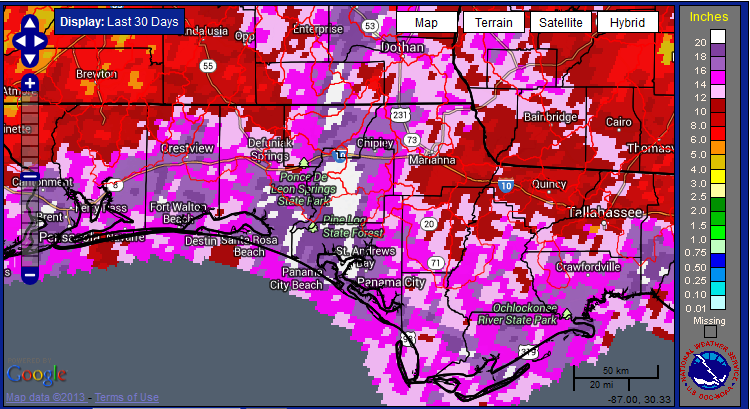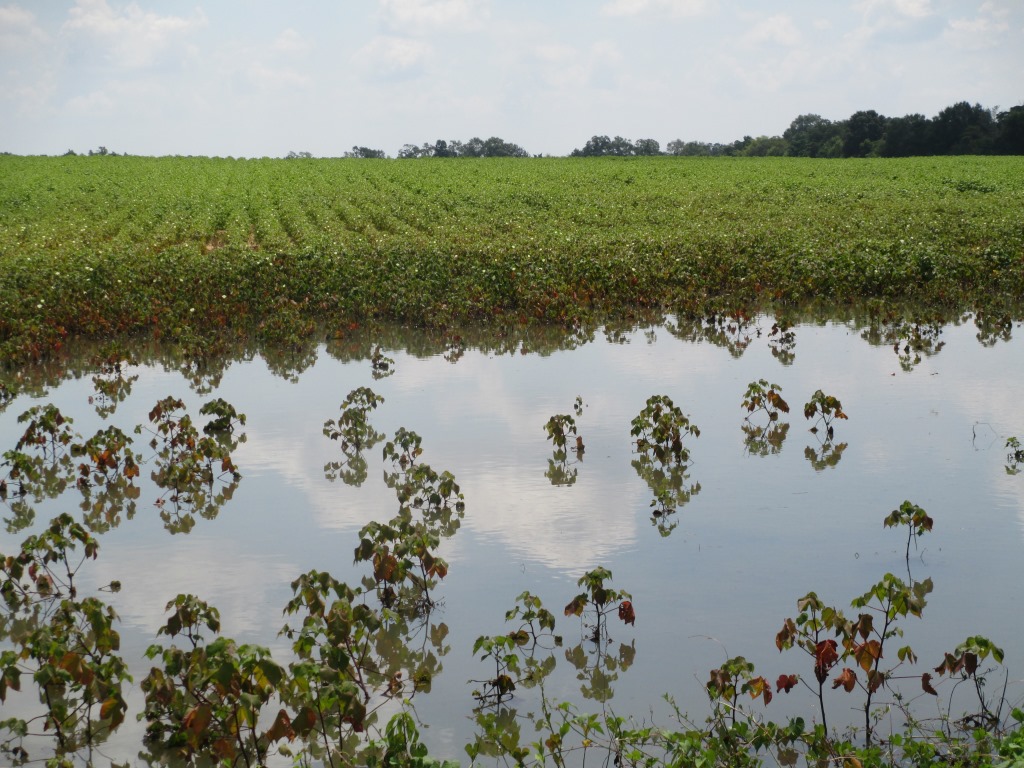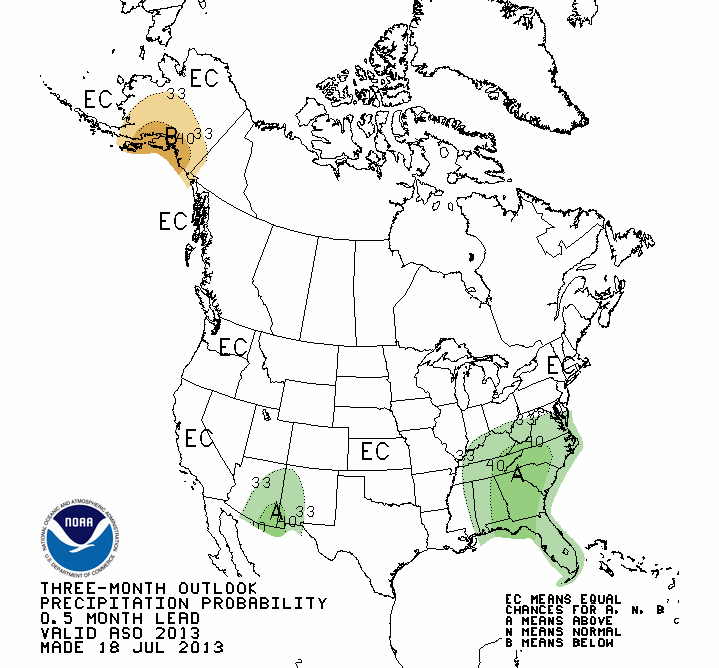Josh Thompson, Regional Agronomy IPM Agent & Doug Mayo, Jackson County Extension Director
The country music singer, Alan Jackson, has a song titled, “Too much of a good thing, is a good thing.” Normally, that is right, but the excessive rains in July are an exception. Flooded and saturated fields have been, and continue to be a problem across the Panhandle. Not only does wet land prevent field operations, but it also has negative effects on plant growth, if the soils stay water logged for a long period of time.
Waterlogged soils prevent plant roots from getting the oxygen they need. Additionally, water and nutrient flow through plants stop, and plants quit growing. Given these conditions, many growers want to know what, if anything they can do to make their crops recover. The following are recommendations for some common questions.
Should you fertilize yellow cotton?
Much of the soil nitrates, especially in sandier fields, have been lost from heavy rains. If your cotton is not past the third week of bloom, side-dress with 50-60% of normal rate of nitrogen (N). Foliar applications will generally not be adequate, so ground applications are preferred. If your crop is mid-bloom or later, research shows that additional N will not increase yields. Unfortunately, any N applied after about the 4th week of bloom is a probably a waste of money.
What about foliar potassium on cotton?
Some foliar potassium may prevent disease if applied at the first sign of leaf spot (not including Target Spot). Soil applied potash at planting is the best defense; however rains can cause potassium leaching. Additional potash prior to 1st bloom may be beneficial.
Will foliar N jumpstart my yellow peanuts?
The best thing for saturated peanuts is to get the roots some air. Once they have air, the nodules will likely start producing N again. However, it may help to check nodule activity. Pull up several plants and cut the nodules. If they are dark red in the center, they are still active. If they are tan or brown, they are inactive. Dr. Scott Tubbs, UGA Peanut Agronomist, has said: “In the event of heavy nodule failure (greater than 50% of nodules inactive), a foliar application of ammonium sulfate may be necessary.”
What about fungicides?
For peanuts, the weather conditions are prime for leaf spot and white mold. Be sure to use spray for both diseases and rotate chemistries. For cotton, we need to spray for Target Spot on the 1st and 3rd week of bloom. It is unclear if sprays prior to bloom will work but we know that spraying after the 3rd week does not. Do not make more than 2 applications of Headline, Twinline or Quadris. This disease could easily develop resistance.
How should I manage my hayfields?
First there was not enough moisture for grasses to grow rapidly, now it is too wet, or raining too frequently to harvest (21 of 31days in July). Most hay fields have become very mature or rank. Once there finally is a 3-4 day window for harvest, expect the hay to be low in quality = ↑fiber, ↓protein, and ↓energy.
Hay could be in short supply this winter because of similar conditions all across the Southeast, so you may be forced to feed this low quality hay. Make sure you separate the first cutting from others that follow, because you will have to supplement more nutrients to make use of it. This first cutting should definitely be tested for quality, so you can manage nutrition accordingly.
Heavy rains also leach nutrients from hay fields. To promote vigorous regrowth, fertilize with at least 50 lbs/a nitrogen (N), 50 lbs/a potassium (K2O), and 10 lbs/a sulfur. Phosphorous (P2O5) does not generally leach very much from the soil, so except in very sandy soils, it should not have been depleted by the heavy rains.
The NOAA outlook for the next three months ahead is for continued higher than average rainfall. It may be time to consider investing in equipment for round-bale-silage, aka baleage. At least with baleage you can harvest in the same day you cut, so you only need one dry day at a time.
- Carinata Starting to Come Up in Jackson County - December 12, 2014
- Wheat Production Considerations for 2014-2015 - November 10, 2014
- Peanut and Cotton Harvest Video 2014 - November 10, 2014



